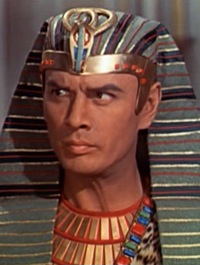 Allow me to expand on my parenthetical aside about the shifting sands of Ra from Tuesday’s essay:
Allow me to expand on my parenthetical aside about the shifting sands of Ra from Tuesday’s essay:
First of all, I must emphasize that the iPad edition of Reiner Knizia’s Ra, implemented by Sage Board Games, passes the most important test I could give it. After writing that post, I brought my iPad to a friend’s regular board game night, and a shifting group of us played or watched the game several times. We had a perfectly splendid time! I quite genuinely look forward to my next opportunity to go a few rounds in the Middle Kingdom with my friends.
At the same time, this incarnation of Ra also features a handful of UI design problems, made more obvious through that heavy play session. Most of the issues come down to per-player controls popping up in inconsistent locations, which caused us to sometimes take each others’ turns inadvertently, as well as the use of simple recoloring for choice-highlighting — almost never a good UI decision. (If you see two choices, and one of them is red and one is yellow, which one is selected?)
But what moves me to write today is the sand.
In contrast to its choice to use vibrant original art for the game tiles, this edition’s visuals and audio effects use the theme of Ancient Egypt as a long-dead civilization, as familiarly portrayed in popular culture. Lots of brown: The playing surface resembles discolored, pitted stone, and the in-game text appears on frayed papyrus that looks like it would crumble at a touch. Every so often, sand drifts across the board, and the audio says whoooosh; during bidding phrases, sand dunes blow in to obscure the playfield entirely. Besides the background music, the only sounds are the wind and the stony grating noises the tiles make as they’re drawn.[1]
Leaving aside the appropriateness of filling the screen with animated effects in the middle of someone’s turn, I question what all this sand and the other mummified trappings are doing here in the first place. It would be perfectly at home in a game themed around excavating the sorts of ancient ruins, weathered by centuries of shifting sand, that we easily associate with thoughts of Ancient Egypt. But Ra is not that game!
Instead, Ra means to invoke Egypt as it stood before all that: a living civilization, filled with a people whose strength comes from their ingenious use of the precious, verdant land the Nile gives them — the desert has little to do with it. The game’s beautiful tiles do succeed here: through them, we watch as the river floods and flowers bloom, with the farmers moving in after it recedes. The priests burn thick blue incense to curry divine favor, while artists and writers strive to set their patron pharaoh’s deeds in stone and clay. Sometimes there is drought, disaster, and unrest, but only in service to the game’s narrative of a people thriving despite adversity, scarcity, and competition.
That said, the game concerns itself with civilization’s mortality, as well. As the sun never falters in its marking the passage of time — and as each involuntary draw of a sun-inscribed Ra tile makes the game draw closer to its end — the players’ kingdoms will all fall. In the end, all that will be left is whatever great stone monuments they’ve managed to build (and which they now can finally score points for); all else is dust, without even anyone left to remember who used to live there.
And that is where the sand effects should appear. How subtle it would be to portray the desert not as a ubiquitous landscape, but a looming force just out of sight, waiting as long as it needs to inevitably reclaim all the proud humans’ achievements for itself. The game already does possess a more appropriate animation of the players’ non-permanent tiles sinking into the sand between the three rounds (which represent the rise and fall Ancient Egypt’s major dynastic epochs); the game would benefit from limiting the desert’s appearance to this — perhaps also having the dunes drift in to cover the board with finality at the very end, when only the monuments remain.
Knizia’s Ra is such a lovely game both from its elegant and rewarding ruleset and its very clever application of theme, and it speaks a lot to the latter that a background design detail in the iPad edition causes me to write this much. I still quite enjoy this edition of the game, as I say, and I’ll be playing it plenty more. I just needed to pause and shake some of this sand out my shenti.
[1] Surprised to find myself unable to illustrate this effect with a YouTube video. Note to the publisher: you’re missing an important cue about how to market an independent videogame in 2011. Consider getting on that. ↩

